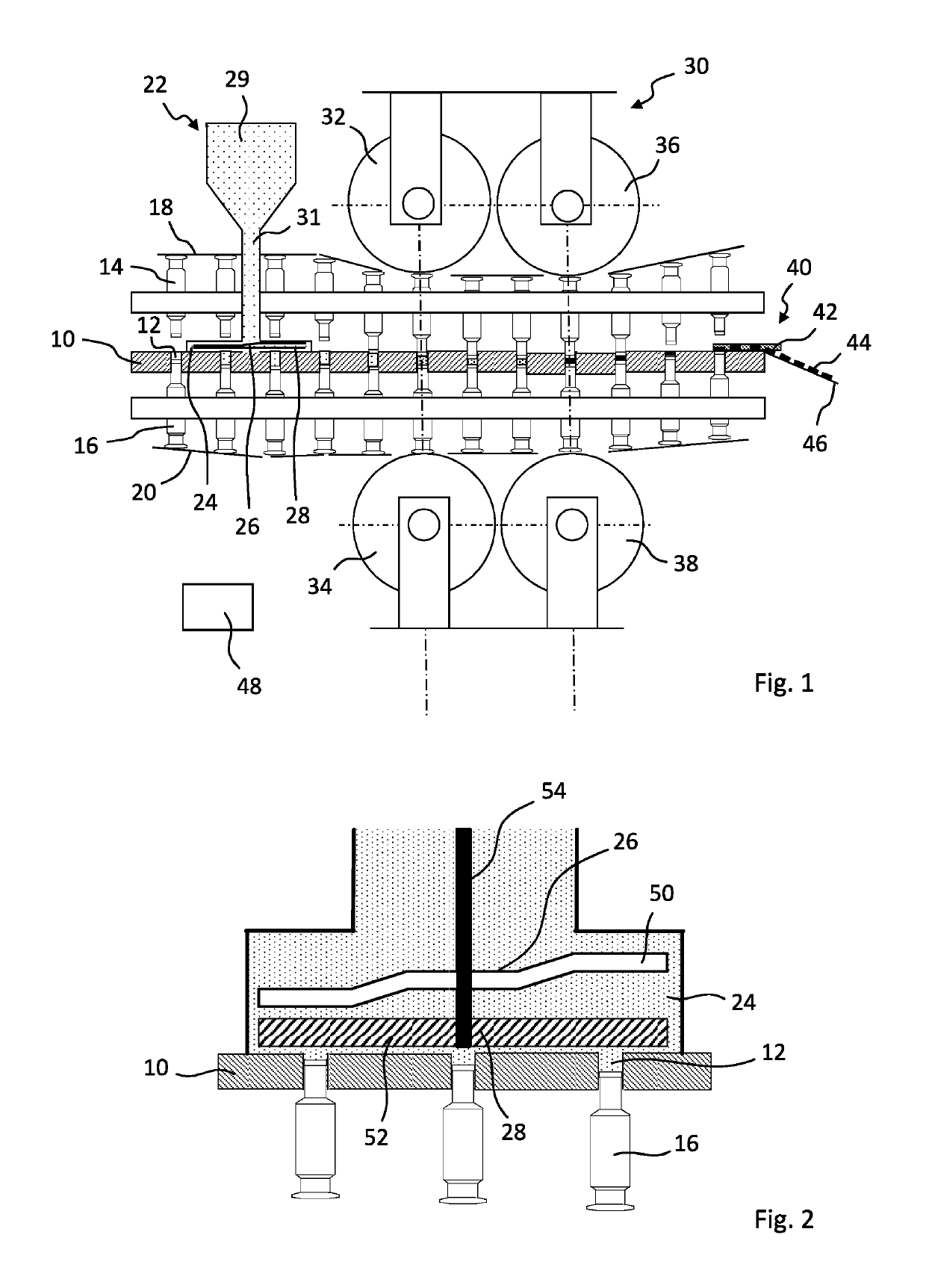Filing apparatus for a rotary press
a filling apparatus and rotary press technology, which is applied in the field of filling apparatus for filling cavities in rotary presses, can solve the problems of not offering satisfactory loosening of pressing materials, affecting the flowability, and difficult to find a stirrer blade configuration that realizes all of the various goals, and achieves high press outputs.
- Summary
- Abstract
- Description
- Claims
- Application Information
AI Technical Summary
Benefits of technology
Problems solved by technology
Method used
Image
Examples
Embodiment Construction
[0023]The rotary press shown in FIGS. 1 and 2, in particular the rotary tablet press, comprises a rotor that is rotationally driven by a rotary drive (not shown) with a die plate 10 which has a plurality of cavities 12. Referring to FIG. 1, the cavities 12 can, for example, be formed by holes in the die plate 10. The rotor further comprises a plurality of top or upper punches 14 and lower or bottom punches 16 that rotate synchronously with the die plate 10. An upper punch 14 and a lower punch 16 are assigned to each cavity 12. The axial movement of the upper punch 14 and lower punch 16, during the rotation of the rotor is controlled by upper control cam elements 18 and lower control cam elements 20. The rotary press moreover comprises a filling apparatus 22 which has a filling chamber 24. As shown in FIG. 1, a first stirrer blade wheel 26 and a second stirrer blade wheel 28 are arranged superimposed in the filling chamber 24. As shown, the stirrer blade wheels 26, 28 are rotatably d...
PUM
| Property | Measurement | Unit |
|---|---|---|
| rotary speed | aaaaa | aaaaa |
| weight | aaaaa | aaaaa |
| breaking strength | aaaaa | aaaaa |
Abstract
Description
Claims
Application Information
 Login to View More
Login to View More - R&D
- Intellectual Property
- Life Sciences
- Materials
- Tech Scout
- Unparalleled Data Quality
- Higher Quality Content
- 60% Fewer Hallucinations
Browse by: Latest US Patents, China's latest patents, Technical Efficacy Thesaurus, Application Domain, Technology Topic, Popular Technical Reports.
© 2025 PatSnap. All rights reserved.Legal|Privacy policy|Modern Slavery Act Transparency Statement|Sitemap|About US| Contact US: help@patsnap.com

